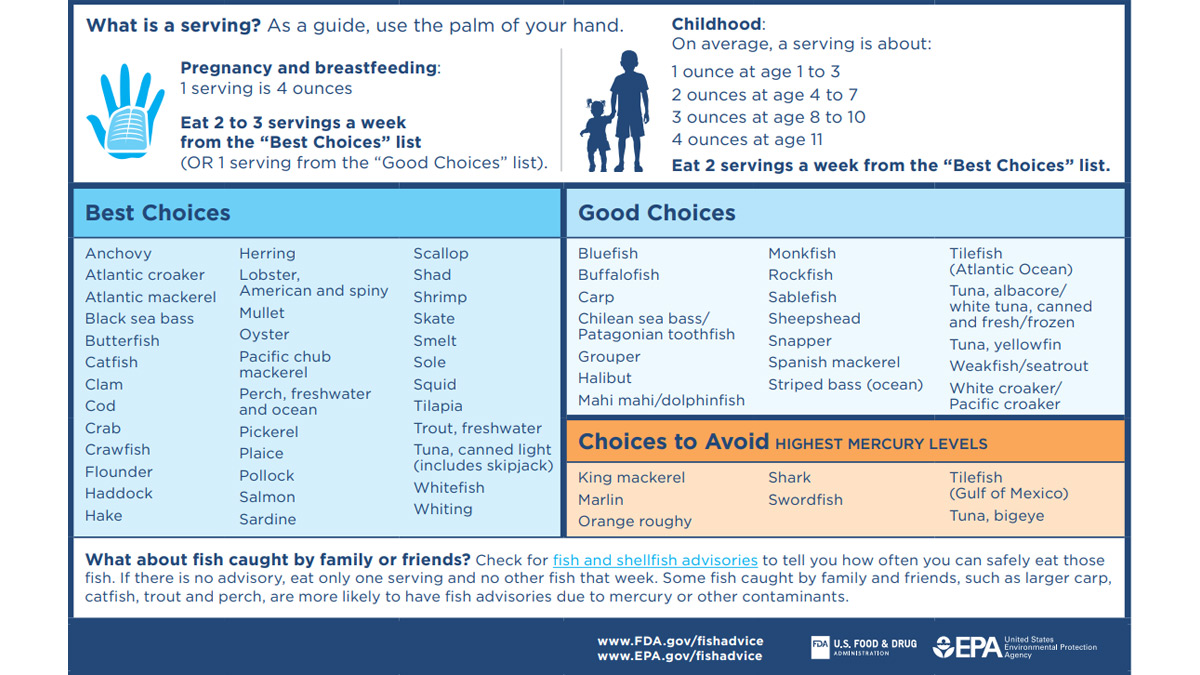At a glance
Mercury exposure can affect an infant's brain and nervous system development during pregnancy and after birth. Breastfeeding mothers should minimize exposure to mercury in their diets, at home, and at work.

Introduction
Mercury occurs naturally in the environment and is also released through human activities such as burning coal and oil. Mercury collects in streams, lakes, and oceans, where fish and other animals are exposed.
Small amounts of mercury are also used in common household items such as fluorescent bulbs and some thermometers. People who work in recycling plants, who manufacture items with mercury, and who handle dental amalgam may be exposed to mercury.
Key findings
Mercury can pass from a mother to her baby through the placenta during pregnancy and, in smaller amounts, through breast milk after birth. Mercury exposure can affect the infant's brain and nervous system development during pregnancy and after birth.
At home
Handling an intact lightbulb or thermometer that contains mercury does not cause mercury exposure. If a mercury-containing lightbulb or thermometer breaks, however, it can spill mercury onto surfaces and release mercury vapors into the air. If this happens, follow the EPA instructions on safe clean-up of a broken mercury-containing lightbulb or broken mercury thermometer.
At work
Women who are concerned about mercury exposure at work should talk to their supervisor or safety officer. Information on how to reduce mercury exposure in different jobs the Occupational Safety and Health Administration (OSHA) and on this fact sheet.
Fish and mercury
The mother's diet is the main source of mercury exposure for most breastfed infants before they are introduced to complementary foods. Fish is an excellent source of protein and provides essential vitamins and minerals. Yet most fish contain some level of mercury.
When a mother eats fish, the mercury in the fish can be passed into her breast milk. However, the benefits of breastfeeding may be greater than the possible adverse effects of exposure to mercury through breast milk.
Mercury accumulates in the fish's muscle tissue. Consequently, trimming the fish's skin or fat does not reduce the mercury content. No cooking method reduces mercury exposure.
It may help to eat mostly small fish such as sardines and scallops. Large fish that have lived longer, such as swordfish, tuna, shark, king mackerel, and tilefish, have higher levels of mercury because they have had more time to accumulate it.
The U.S. Food and Drug Administration and the U.S. Environmental Protection Agency offer fish consumption guidance for pregnant and breastfeeding women and young children. These guidelines include:
- Eat a variety of fish.
- If you eat fish caught by family or friends, check for fish advisories. If there is no advisory, eat only one serving and no other fish that week.
- It is best to eat a variety of fish from the "Best Choices" and "Good Choices" categories on this chart. Try to avoid eating the "Choices to Avoid" fish or feeding them to children.
For adults:
- 1 serving = 4 ounces of fish measured before cooking.
- Eat 2 to 3 servings (between 8 and 12 ounces) of fish a week from the "Best Choices" list OR 1 serving (4 ounces) from the "Good Choices" list on this chart.

